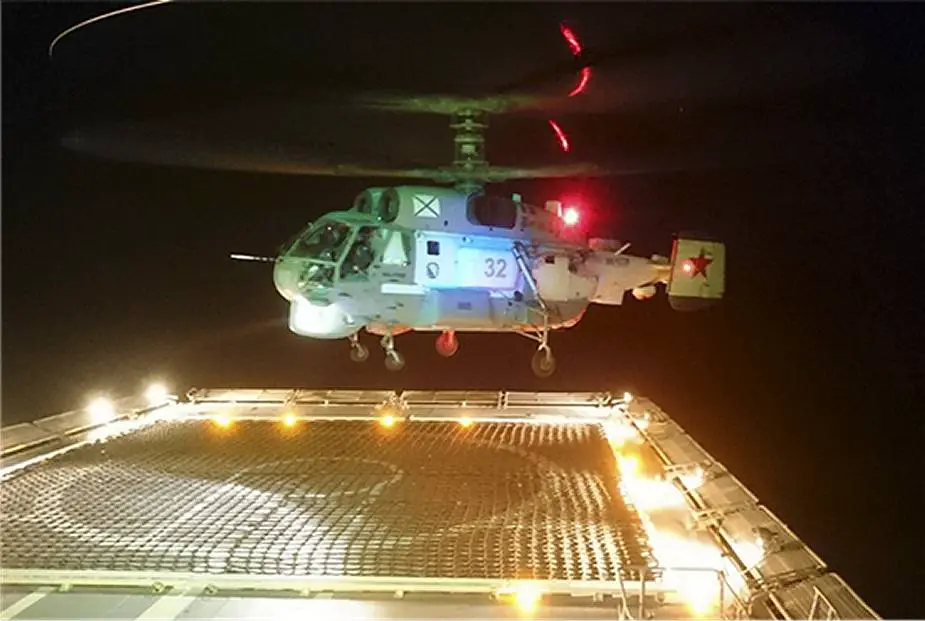According to information published by the Russian MoD, on December 17, 2020, Russian Navy Kamov Ka-27 (NATO reporting name: Helix) helicopters of a separate shipborne helicopter regiment of the Northern Fleet’s air and air defense large unit have practiced landing on the Project 22350 frigate Admiral Kasatonov during the polar night, the Russian Defense Ministry’s press office said.
Follow Navy Recognition on Google News at this link
 Russian Navy Ka-27 naval helicopter conducts night landing operations. (Picture source Russian MoD)
Russian Navy Ka-27 naval helicopter conducts night landing operations. (Picture source Russian MoD)
“The exercise took place in Kola Bay in the roadstead of the Northern Fleet’s Severomorsk base and involved eight helicopter crews and the ship’s flight control team,” the press office said.
“The pilots performed more than 20 takeoffs from and landings on the helipad while the ship was at anchor. The landing was practiced in total darkness with the use of navigation and lighting equipment,” the press office added.
Deck landing is an obligatory training element for pilots of naval helicopters as it allows them to operate far away from coastal airfields, including during long-distance voyages of Northern Fleet ships.
Earlier, the Project 1155 large antisubmarine warfare ship Vice Admiral Kulakov (Udaloy-class) and pilots and technicians of the helicopter regiment completed their long-distance voyage. During the voyage, the pilots used Ka-27 helicopters to accomplish antisubmarine warfare and search-and-rescue missions.
Several crews of the separate shipborne helicopter regiment will soon complete training to take part in a new long-distance mission of Northern Fleet ships.
The Ka-27 (NATO reporting name 'Helix') is a military helicopter developed by the company Russian rotorcraft manufacturer Kamov for the Russian Navy, This naval helicopter is currently in service with Russia, Ukraine, Vietnam, China, South Korea, and India. The helicopter was developed for ferrying and anti-submarine warfare.
The Ka-27 is based on two rotors design spinning in opposite directions to give directional stability during flight. The Ka-27 is operated by a crew of 3, including the pilot, technical coordinator, an ASW (Anti-Submarine Warfare) systems operator for the Ka-27PL variant, or a winch operator for the Ka-27PS.



